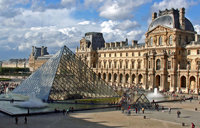Rome is without doubt one the most beautiful cities in the world; every year millions of tourists come from around the world to admire the treasures and masterpieces of Roman art and architecture.
But a trip to the Eternal City can be eternally confusing for first-time visitors. This guide will make it easier to uncover Rome, offering lots of practical advice that will
help you discover and enjoy the city in all its glory.
Because Rome is such a huge tourist draw, choose the date for your trip carefully. The best times of the year to visit are April, May, and late September through October. In the depths of summer, the heat and the crowds make the city nearly unbearable. August in particular should be avoided because this is the month that the entire country of Italy seems to go on vacation. Traveling too late or too early in the year can also be risky because the opening hours for many attractions are shorter, and some are closed completely.
Airfares typically drop quite a bit when "shoulder season" begins in the early autumn, making this the optimal time to visit in my book. The days are still warm, the nights are slightly cool, and the tour groups and student mobs have mostly disappeared.
If you can plan to stay as long as a week, you won't run out of things to do and you'll still feel like you're leaving too soon. But if your time is limited, allow at least four days to see all of Rome's major attractions. If you try to cram the entire city into a two-day span and do nothing but run from place to place furiously snapping pictures, you'll only be cheating yourself. After all, Romewasn't built in a day and it can't be seen in one, either
Venice is a delightful place to visit for a short city break, or for an extended holiday.
As you cross the long causeway by train or road, you enter a land of magic. You're going to be saying goodbye to traffic for as long as you remain on the main part of Venice. So no more fears of crossing busy roads. Just be careful you don't have too much wine and fall into one of the canals instead! Think of your local town and imagine all the roads turning into canals and the buses becoming boats and you will begin to imagine something of Venice.
The old part of Venice covers an area which can easily be covered on foot. For example, you can walk from the station to St Mark's Square in about 45 minutes. But you'll probably want to travel on one of the 'vaporetti' and enjoy the trip up the Grand Canal - it's always the best way to arrive in Venice.

What you do in Venice depends on what you like to do, and who you are, and, to some extent, on the season. You may wish to do very little but relax and soak up the atmosphere, taking the occasional vaporetto trip to relieve the boredom! Wander around St Mark's Square taking in the live music offered to people sitting in the cafés, take a look at some of the art Galleries (the Guggenheim is our favourite), arrange to go to the Venice opera, take a stroll around the famous Jewish Ghetto, walk across the Rialto and take a look at the largest of street markets (besides catering for tourists, you'll discover so much local fish, fruit and vegetables that you'll plan to cook for yourselves every day!). Take the map and discover some of the back streets (or back canals!) and get a feel of the place from a Venetian's point of view. Take a vaporetto to the Lido (the island with a wonderful beach on the Adriatic) and take a swim - be warned there is traffic on this island, so don't let it spoil the magic of your visit. Take a vaporetto to Murano and enjoy watching the glass blowing.

And then you'll discover such fabulous venues to eat that you'll forget about the food you purchased at the market and eat out anyway, ending up with a final trip home in a vaporetto - it feels very different from taking the last train home
Map of Venice
ดูแผนที่ขนาดใหญ่ขึ้น































 selection of museums and art galleries. The British Museum, The Science Museum and The Natural History Museum are all close to each other in South Kensington, but you’ll need to allow more than a day to see them all! The National Gallery and the Tate Gallery have splendid art collections, and there are many more of all size and type all over London.
selection of museums and art galleries. The British Museum, The Science Museum and The Natural History Museum are all close to each other in South Kensington, but you’ll need to allow more than a day to see them all! The National Gallery and the Tate Gallery have splendid art collections, and there are many more of all size and type all over London. Coliseum, ballet at Sadler’s Wells or the cinemas in Leicester Square to choose.
Coliseum, ballet at Sadler’s Wells or the cinemas in Leicester Square to choose.


